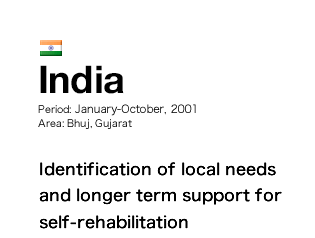
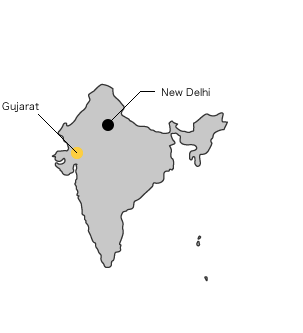
A massive earthquake hit Gujarat, India, on January 26, 2001. It has been estimated that approximately 41,000 people have either died or been severely injured. 920,000 buildings were either completely or half-destroyed. In response, JEN immediately sent staff to the site and provided emergency tents. Through our activities we were able to let people in remote areas know that they have not been forgotten, and that that the international community has not abandoned them. This in turn seems to have encouraged them to take the initiative to actively change their living conditions.
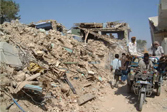
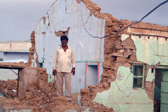
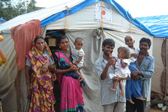
To those who truly need support
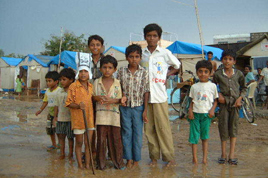
According to our survey, we found that there was a clear gap between areas receiving concentrated support and those receiving no support.
We also found that while our support spread quickly and equally in villages where neighbors maintained close ties, there was a large disparity between people who received aid and those who did not in cities where such ties were absent. Some of those who lived in villages near the epicenter or areas far from the main roads had no place to live. Some lived in very poor conditions, such as tents made of plastic and vinyl found in the debris. In response, we decided to distribute 57 emergency tents.
Sustainable support
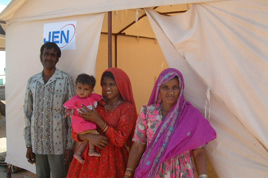
A survey later revealed that even months after the earthquake, many people were still forced to live in very severe conditions. Living in poor-quality tents where the temperature fluctuates from 5℃ to 40℃ is extremely harsh. Many of the tents that were distributed immediately after the earthquake could not shield the people from strong sunlight or wind. Consequently, we needed to think of ways to prepare for drastic changes in the climate and the rainy season that was to start in June. We decided to start distributing house-style tents that were durable during the rainy season and in cold weather, and could be used medium-long term. The foundation of these house-style tents were made of concrete and thus even if the area surrounding the tent may become muddy due to heavy rain, the tent itself would not be affected. Additionally, since the ceilings are higher than those of emergency tents, it does not become too hot inside even under strong sunlight.
Thus many people expressed their gratitude as they found these tents to be very comfortable, and started calling them “House” from its appearance. We ended up building 700 tents with the victims over the course of nine months, and helped improve their harsh living conditions.
Basic Information
| Country Name | India |
| Capital | New Delhi |
| Population | 1,027,020,000 |
| Area | 3,287,263 km2( Indian data, includes areas under dispute with Pakistan and China; 8.7 times larger than Japan ) |
| Ethnic Groups | Indo-Aryan, Dravidian, Mongoloid etc., Other |
| Languages | Hindi (the federal offical language), 17 other official languages |
| Religions | Hinduism (82.7%), Islam (11.2%), Christianity (2.6%), Sikhism (1.9%), Buddhism (0.7%), Jainism (0.5%) . |

